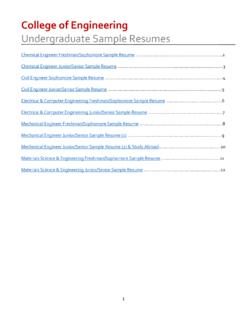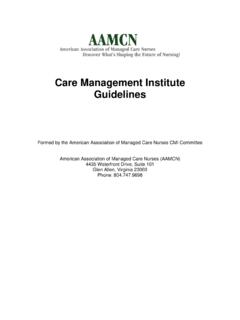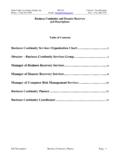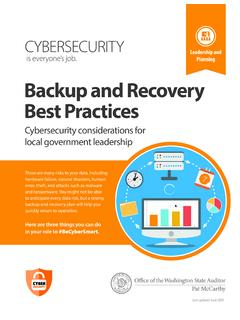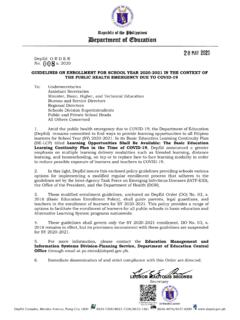Transcription of Emergency Evacuation and Fire Drill Guidelines
1 Environmental Health and Safety Page 1 of 9 Environmental Health and Safety Emergency Evacuation & fire Drill Guidelines Date of Issuance: Revision Date: June 2020 Revision Number: 2 Prepared by: EHS 1. Introduction a. This document was developed to establish Guidelines set forth from the International fire Code (IFC) requirements and health and wellness best practices, to be implemented in the event of a fire Drill or Emergency Evacuation on Carnegie Mellon University (CMU) property. Evacuation from buildings may be necessary as the result of fire , explosion, chemical leak, structural fault, equipment failure or bomb threat. These Guidelines have been prepared predominantly for fire emergencies, but they are suitable for use in other emergencies.
2 B. These Guidelines have been developed for CMU buildings located in Pittsburgh, PA. c. In order to avoid delay, confusion and possible injury during an Emergency , it is essential that Evacuation Guidelines are understood and regularly practiced. 2. Scope a. These Guidelines are to not only provide a heightened awareness on what to do in the event of an Emergency Evacuation , but also to provide preparedness training and education for: i. fire Drills, ii. Safe and orderly Evacuation of people from a building in an Emergency , iii. ADA guidance and pre- planning , iv. Health & wellness best practices and pandemic Guidelines while evacuating a building, v. fire Alarm testing, Impairment and fire watch, and vi. business continuity during a fire or Emergency .
3 Environmental Health and Safety Page 2 of 9 3. fire Drills a. In an effort to practice fire safety awareness and preparedness in compliance with the fire code, Environmental Health and Safety (EHS) works with Facilities Management and Campus Service (FMCS) Life Safety Team, to conduct required drills. The frequency of the drills depends on the building classification or use. i. For the academic and administrative buildings on campus, an annual fire Drill is required. These drills are scheduled in the summer. 1. Notification announcements via email will be sent out prior to fire Drill for academic and administrative buildings. ii. For residential housing facilities, quarterly fire drills are required. The first of these drills must be scheduled within the first 10 days at the start of fall semester.
4 1. Notification announcements for Resident Housing facilities, should be communicated through the CMU Housing Management and Leadership. If the property is a leased Housing facility, communication of any fire Drill should be through the leasing agencies management company. iii. EHS recognizes that these drills may interrupt schedules and can cause some inconvenience; however, these drills are required by fire code and full cooperation and participation is required. iv. The expected duration of a fire Drill can range depending on the size of the building. The average duration is 15 to 20 minutes. v. Scheduled days of fire drills with inclement weather will be canceled. Notification will be sent out and the Drill will be rescheduled for a later date and time.
5 B. CMUSafe Ambassador/Floor Marshals i. Enterprise Risk Management (ERM) Disaster Recovery and business continuity (DR/BC) facilitates the CMUSafe Ambassador/Floor Marshal Program. For more information, questions or to become a volunteer, please visit ii. During a fire Drill , if a CMUSafe Ambassadors/Floor Marshal or a Pandemic Safety Officer (PSO) is present, they can assist building occupants to the nearest exit. c. During a fire Drill , a siren/horn and/or voice command announcement will sound and in some locations, strobes will flash. Follow these safety Guidelines during a fire Drill Evacuation : i. Never ignore a fire alarm. Environmental Health and Safety Page 3 of 9 ii. If a fire alarm sounds, evacuate immediately in a safe and orderly manner do not run.
6 Iii. If needed, shut-off any heat sources or equipment, quickly gather personal belongings ( keys, pursue, bag) and proceed to the nearest exit. iv. Remember to wear a facial covering and maintain physical distancing of at least 6 ft. or as best as reasonably possible. v. It is recommended to have at least two ways out. Proceed to the nearest exit. vi. Always use the stairs. Do not use the elevators. vii. When you exit, move at least 150 ft. away or further, to a safe location from the building or to a designated meeting area. Again, remember to maintain physical distancing of at least 6 ft. viii. Do not re-enter the building until given the all clear to return inside by CMUSafe Ambassadors/Floor Marshals or authorized personnel ( EHS, University Police, FMCS Life Safety, University officials).
7 If the alarm is silenced, it does not mean that the Emergency is over or that the building is safe to enter. ix. For any ADA assistance during a fire Drill or inability to self-evacuate, shelter-in-place or go to an enclosed stairwell; if safe to do so. Tell someone of your location and ask them to notify either an authorized personnel conducting the Drill , a CMUSafe Ambassador or Floor Marshal outside the building. If you are not sure if the fire alarm is a Drill Call University Police at 412-268-2323 and tell them of your location and situation. x. Remember to thoroughly wash your hands or use hand sanitizer after the fire Drill . 4. Emergency Evacuation Guidelines a. A fire alarm activation or potential fire Emergency inside a building can happen unexpectedly.
8 When this occurs, a safe and orderly Evacuation of everyone inside the building is crucial. i. All occupants should make themselves familiar with: 1. Location of fire exits 2. Location of the fire alarm pull stations 3. fire Extinguishers and Emergency equipment 4. Discuss a designated meeting assembly area at least 150 ft. away from the building for accountability. Environmental Health and Safety Page 4 of 9 5. Emergency Evacuation Plans for their building b. In the event of a fire or Emergency , University Police and the City of Pittsburgh Bureau of fire (Authority Having Jurisdiction (AHJ) will conduct Emergency operations and response at the scene. c. If you discover a fire or Emergency : i. Activate the fire alarm system via the pull stations closet to exit doors on the way out of the building.)
9 By doing this, it will alert others in the building of a fire or Emergency and to get out. ii. Notify the University Police at 412-268-2323 (all hours) or call 911, and provide the following information: 1. Building name or address location, floor or room number or the fire or Emergency , if known. 2. Any details of the fire or Emergency ( explosion, loud noise, black smoke, number of people involved). 3. Your name and contact number in case Emergency personnel need more information. 4. Remain on the line till the dispatcher hangs up first. iii. Alert other people in the vicinity. iv. Once outside, stand clear of the exit doors at least 150 ft. away. This allows others to get out safely and allows Emergency personnel and vehicles a clear path to respond to the scene.
10 Remember to practice physical distancing, as best as reasonably possible by at least 6 ft. v. If you have a designated building assembly area, report to that location for accountability or roll call. vi. Never re-enter the building until given the all clear to return inside by Emergency responders, CMUSafe Ambassadors/Floor Marshals or authorized personnel. If the alarm is silenced, it does not mean that the Emergency is over or that the building is safe to enter. d. If you hear the fire alarm, see strobes activated and/or are instructed to evacuate: i. Never ignore a fire alarm. ii. If needed, shut-off any heat sources or equipment, quickly gather personal belongings ( keys, pursue, bag) and proceed to the nearest exit. iii. If it is safe to do so and you are trained, use the appropriate fire extinguisher to put out fire .





